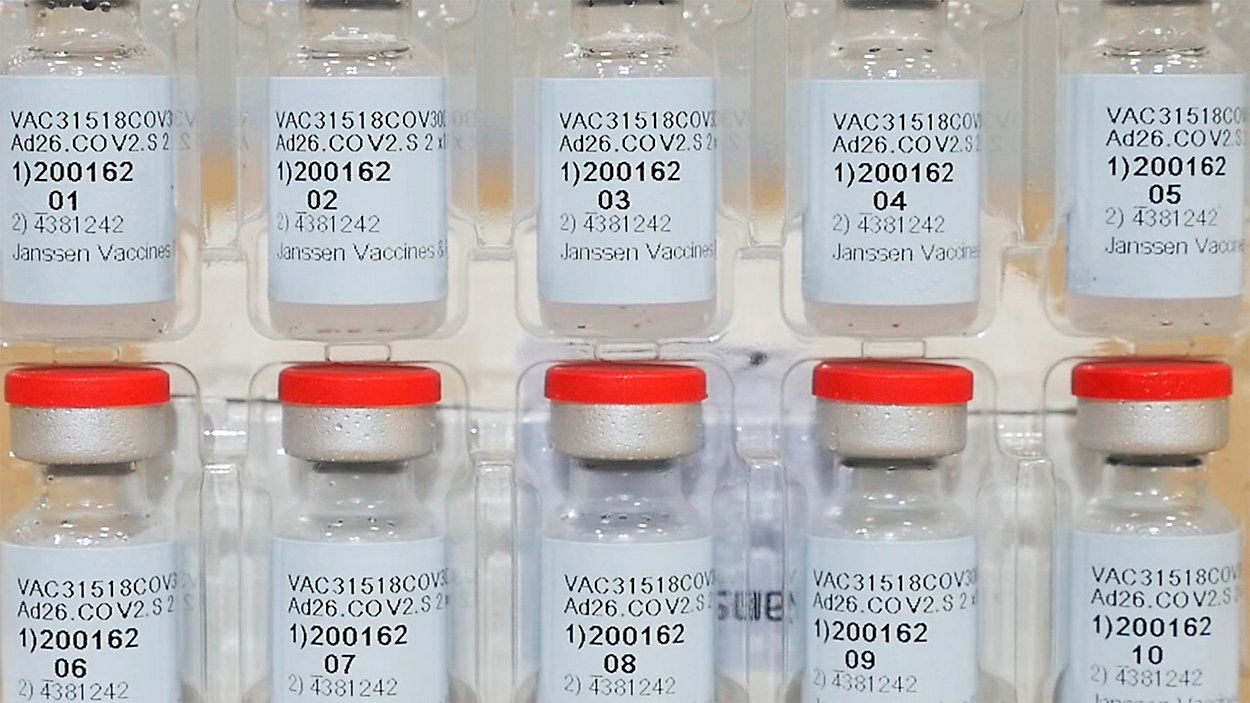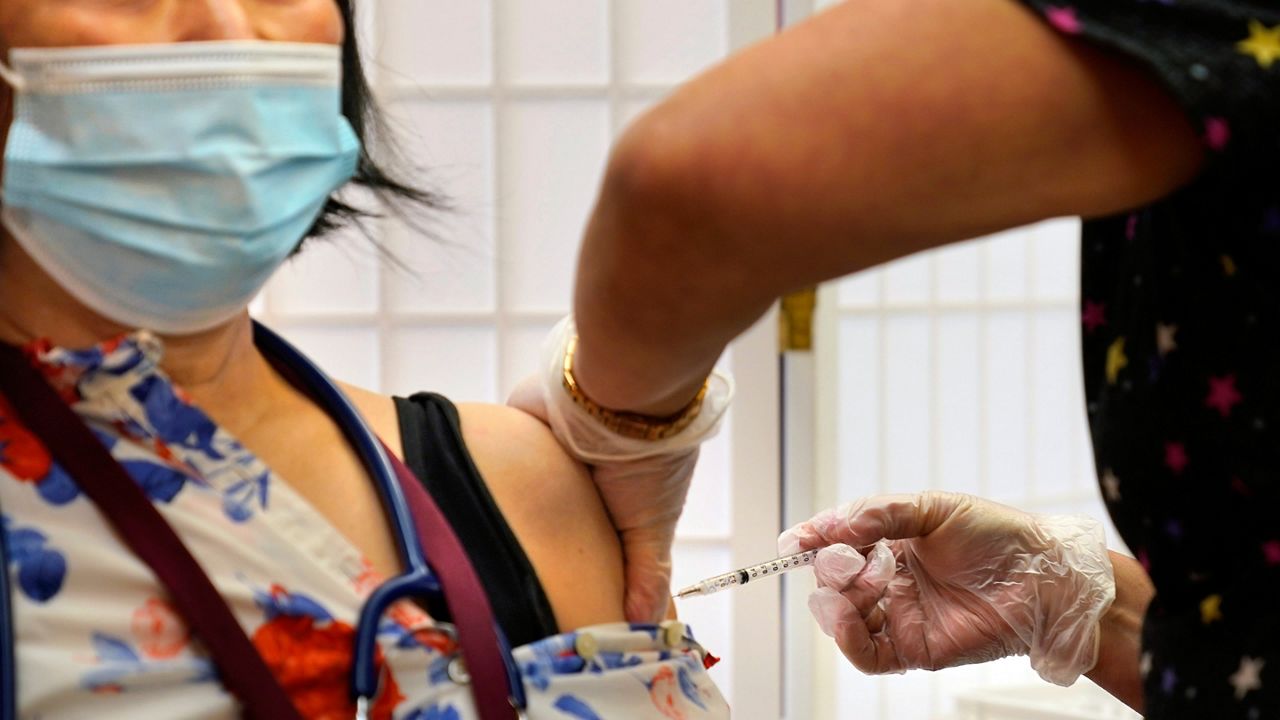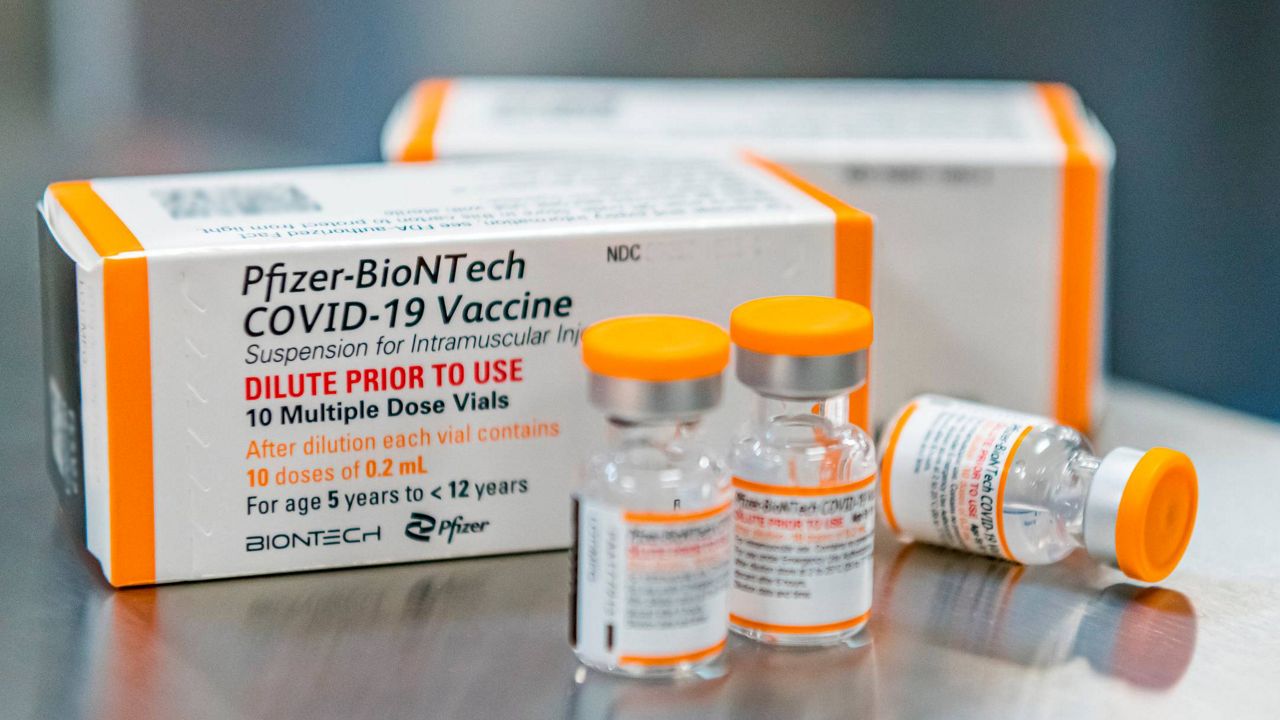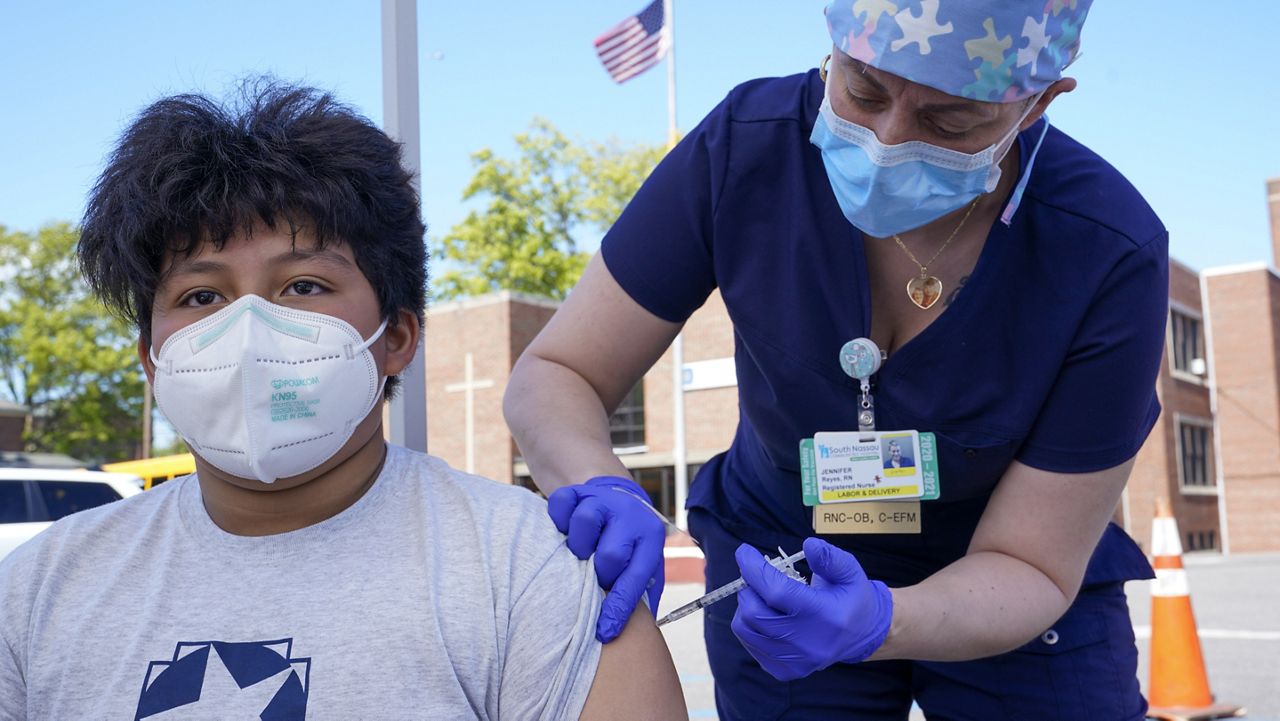The Centers for Disease Control and Prevention (CDC) panel which met to review the Johnson & Johnson vaccine did not make a recommendation Wednesday, leaving the one-shot vaccine in limbo as health officials seek more data to determine if a rare blood clot disorder is linked to the shot.
The independent Advisory Committee on Immunization Practices (ACIP) convened one day after the CDC and Food and Drug Administration (FDA) issued a joint statement on Tuesday recommending that states pause using Johnson & Johnson's COVID-19 vaccine "out of an abundance of caution" after 6 recipients in the U.S. developed a rare disorder involving blood clots.
All of the cases were in women between the ages of 18 and 48, and occurred in veins that drain blood from the brain, and in people with abnormally low levels of clot-forming platelets. One blood clot case was fatal, officials said. Their symptoms occurred from 6-13 days after getting the shot, and were separate from the ones people experience in the days after receiving the vaccine, which can include fever and mild, flu-like conditions.
The panel determined that they need to gather more data and required more time to assess risks, and would look to meet again within 7 to 10 days.
There reports of blood clots are incredibly rare – 6 cases out of over 7 million doses administered in the United States – and health officials are urging people to keep those figures in perspective.
“For now, these are rare events,” U.S. Surgeon General Murthy said in an interview with Spectrum News National Health Reporter Erin Billups on Tuesday, noting there is less than a one-in-a million chance of Johnson & Johnson vaccine recipients experiencing this type of blood clotting complication.
“We don’t know if there’s a connection yet, and there are millions and millions of people who have received the Johnson & Johnson vaccine in the U.S. who thankfully are doing just fine.”
One committee member, Dr. Grace Lee, was among those who advocated tabling a vote. She echoed concerns about getting more data to better understand the size of the risk and whether it was greater for any particular group of people.
“I continue to feel like we’re in a race against time and the variants, but we need to (move forward) in the safest possible way,” said Lee, of Stanford University.
The six cases raised an alarm bell because that number is at least three times more than experts would have expected to see even of more typical brain-drainage clots, said CDC’s Dr. Tom Shimabukuro.
“What we have here is a picture of clots forming in large vessels where we have low platelets,” Shimabukuro explained. “This usually doesn’t happen,” but it’s similar to European reports with the AstraZeneca vaccine.
The clot concerns could undermine public confidence in a vaccine many hoped would help some of the hardest-to-reach populations – in poor countries or in places like homeless shelters in the U.S.
“We know we are fighting a war against COVID-19,” Dr. Peter Marks, the Food and Drug Administration’s vaccine chief, said Tuesday. But when it comes to side effects, “we don’t, in the United States, have a lot of tolerance for friendly fire.”
Health officials recommended the J&J timeout in part to make sure doctors know how to recognize and treat the unusual condition. On Wednesday, the CDC said four of the six women with the unusual clots were treated with a blood thinner named heparin – a treatment the government is warning doctors to avoid.
The U.S. set up intensive systems to track the safety of COVID-19 vaccines, knowing that side effects too rare to have occurred in studies of thousands of people could pop up once millions rolled up their sleeves. Shimabukuro said spotting such a rare potential risk amid the nation’s huge vaccine rollout “is an example of a success story for vaccine safety.”
The setback for J&J comes as the worldwide death toll from COVID-19 approaches 3 million, including more than 560,000 who perished in the U.S., which continues to report tens of thousands of new infections every day and an average of almost 1,000 deaths.
So far, the J&J vaccine has been a minor player in U.S. vaccinations. More than 122 million Americans have received at least one vaccine dose, the vast majority with shots made by Moderna or Pfizer, and nearly 23% are fully vaccinated.
Both companies are on track to have delivered 300 million doses each by mid- to late July — and federal health authorities stress that there are no signs of the unusual clots with the Moderna and Pfizer vaccines.
Health officials warn against confusing the normal flu-like symptoms that occur a day or two after many COVID-19 vaccination with the clot concern.
The problematic clot symptoms, such as severe headache or severe abdominal pain, have occurred about a week to three weeks after the J&J shot.
Read more about what you need to know about the Johnson & Johnson vaccine pause.
This is a developing story. Check back later for further updates.









